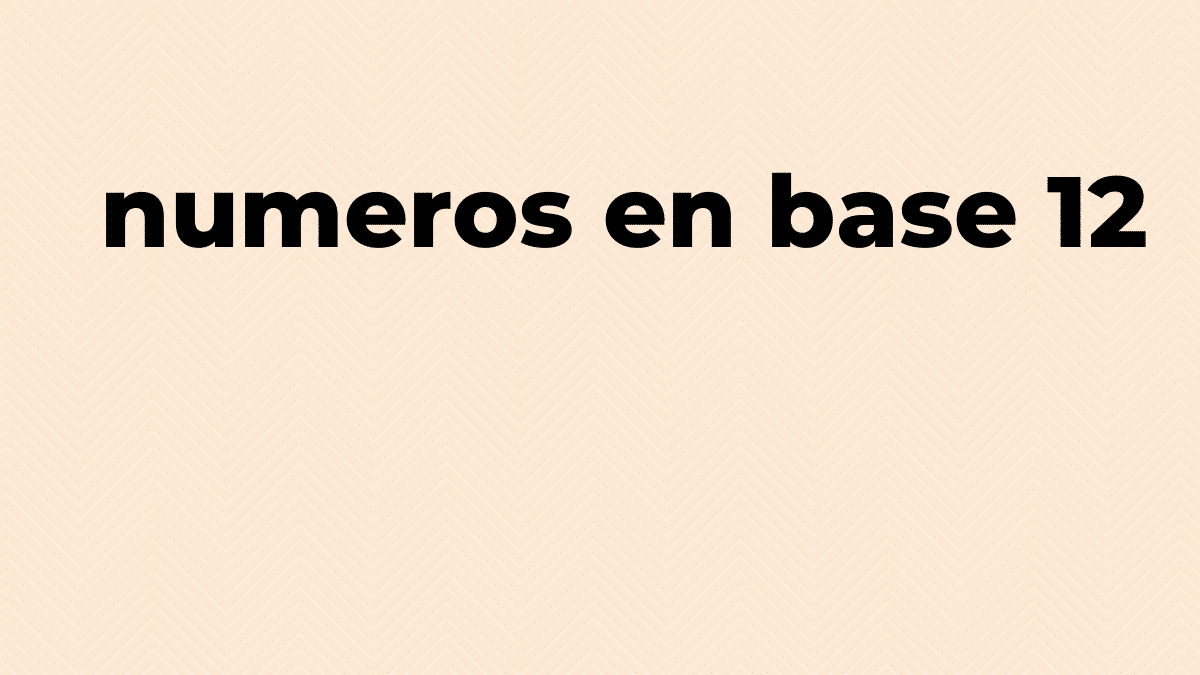
Base 12 Numbering: A Brief History
Base 12 numbering, also known as duodecimal numbering, has its roots in various ancient cultures. This system is believed to have originated from the use of the knuckles (excluding the thumb) to count, giving a total of 12 units on one hand. Throughout history, various cultures have adopted this system to varying degrees. Among the best known are the Babylonians, who used a sexagesimal system in base 60, but divided their numbers into subgroups of 12; and the ancient Egyptians, who also used a duodecimal system in measuring time.
The duodecimal system: numbers and words
In a base 12 number system, 12 different symbols are used to represent numbers: 0, 1, 2, 3, 4, 5, 6, 7, 8, 9, A (10), and B (11). Below is a list of base 12 numbers and their equivalent in Spanish, including the phonetics in parentheses:
- 0 – zero (/'θe.ro/)
- 1 – one (/'u.no/)
- 2 – two (/two/)
- 3 – three (/'three/)
- 4 – four (/'kwat.ro/)
- 5 – five (/'θin.ko/)
- 6 – six (/sejs/)
- 7 – seven (/'sje.te/)
- 8 – eight (/'o.tʃo/)
- 9 – nine (/'nwe.βe/)
- A – ten (/'djeθ/)
- B – eleven (/'on.θe/)
Practical applications of duodecimal numerals
The duodecimal system has certain advantages, especially when it comes to performing arithmetic calculations and simplify the divisions. Since 12 is a highly composite number, it has more divisors than any number less than it (1, 2, 3, 4, 6, and 12). This makes fractions easier to simplify.
An example of practical application of the duodecimal system can be found in the time measurement. As we know, a day is divided into 24 hours, each hour into 60 minutes, and each minute into 60 seconds. These divisions are easier to handle in a duodecimal system than in the traditional decimal.
Base 12 in education and research
Although the decimal system is dominant in most modern cultures, interest in base 12 as an alternative number system lives on. Some teachers and educators, as well as researchers in mathematics and history, recognize the potential of such a system and promote its teaching as a complement to conventional mathematics. This can help students develop a deeper and more nuanced understanding of number and operations, as well as an appreciation of the value of diversity in mathematical tools.
Duodecimal numbers in literature and pop culture
Interestingly, the base 12 numbering system has also made its mark in literature and pop culture. Science fiction and fantasy authors, including such household names as JRR Tolkien and Ursula K. Le Guin, have used the system in their works of fiction to create alternate worlds and richer languages.
In short, the base 12 numbering system offers a different and often more practical perspective on mathematics and how we can use it to express ideas and solve problems. By taking a look at this alternative, we not only broaden our understanding of mathematics but the potential of number systems in general.



